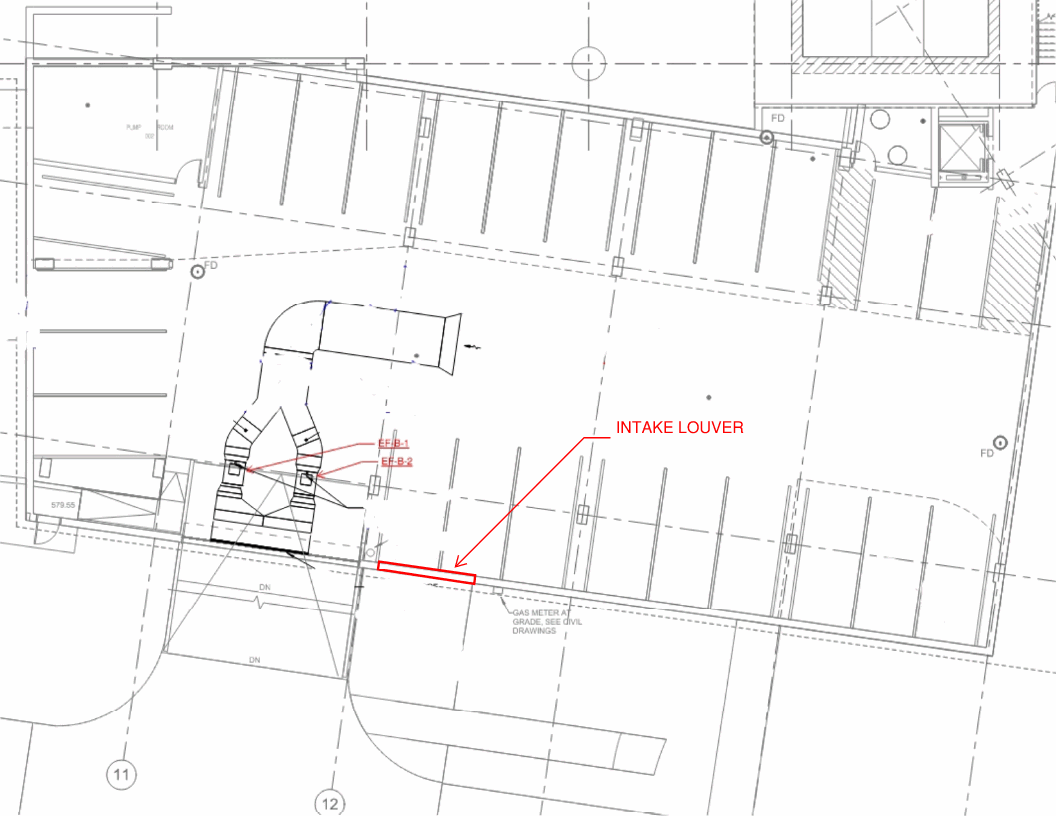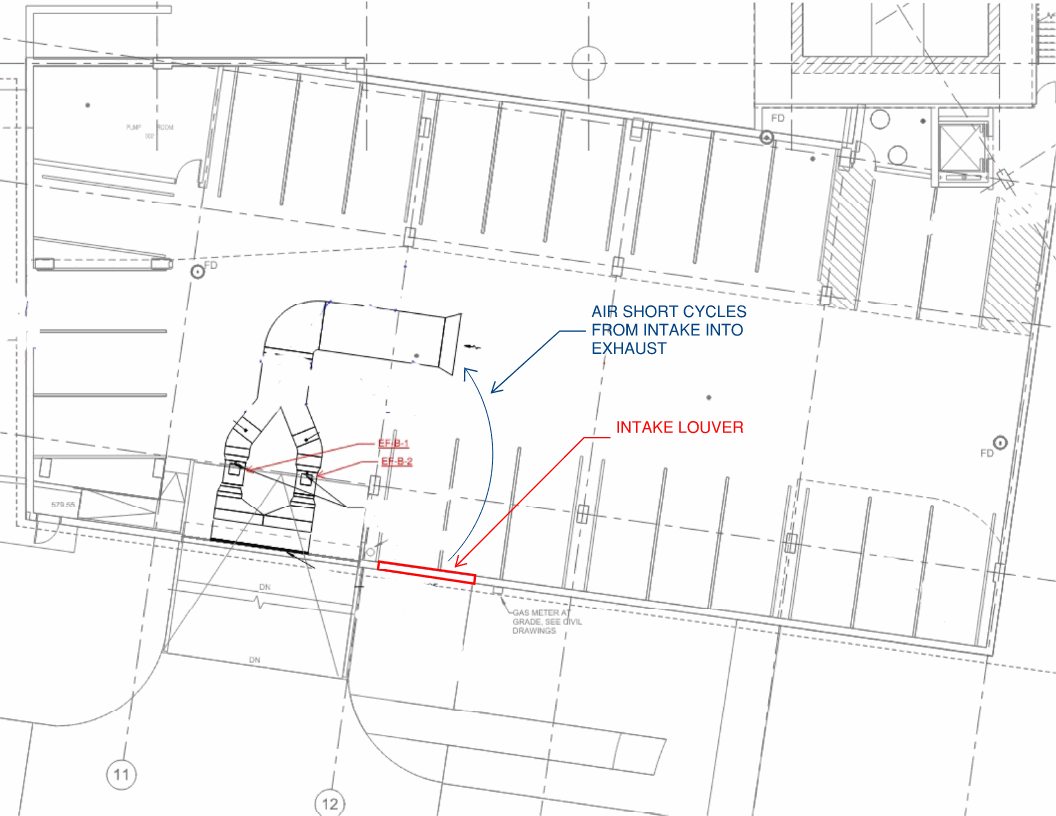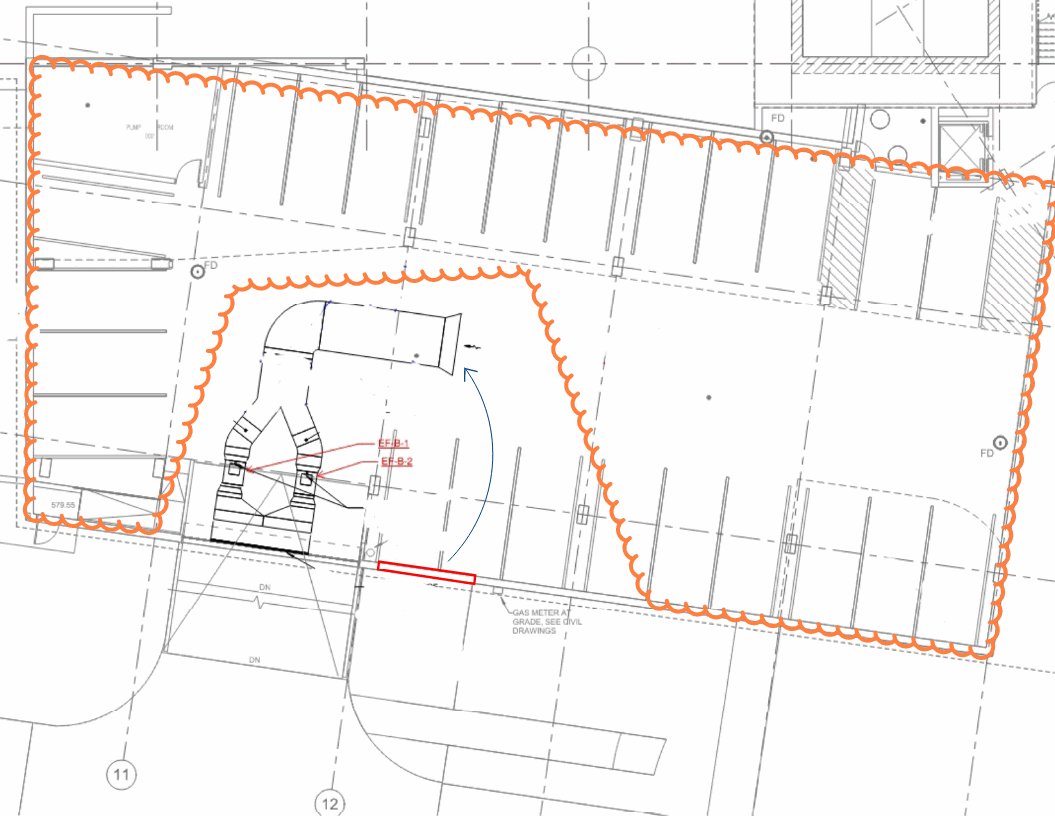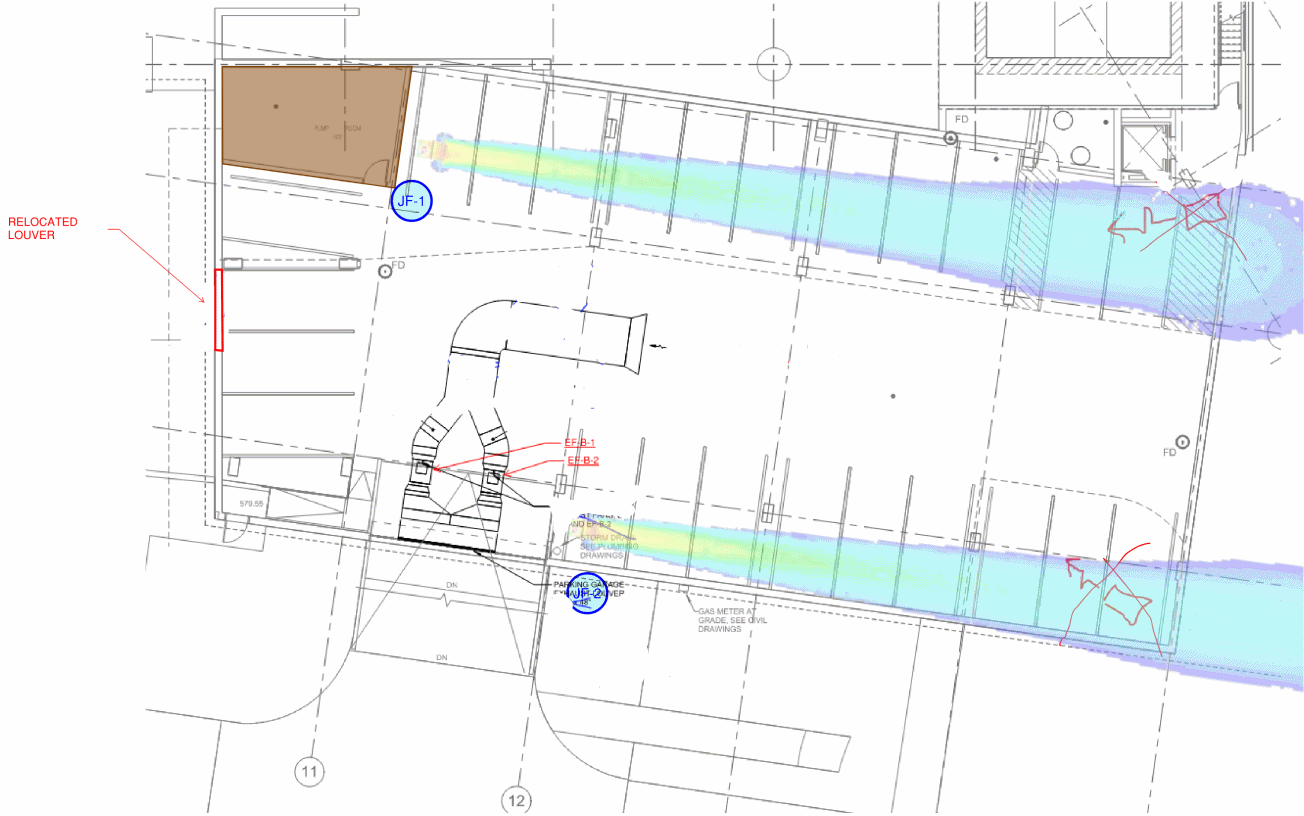As the world becomes a more populous place and land space for development becomes more valuable in urban areas, more and more vehicle parking has transitioned to enclosed and underground parking garages. These parking garages pose a variety of challenges to design engineers, from code requirements to space constraints and aesthetics. While these are all factors to consider, there is one goal that is most important – keeping people safe.
Vehicle traffic in a parking garage is a given, and most of those vehicles produce toxic fumes, such as Nitrogen Oxide (NO) and Carbon Monoxide (CO). Carbon monoxide is odorless, tasteless, and colorless. It is responsible for over 450 deaths per year in the United States and more than 50,000 emergency room visits. Proper ventilation is crucial to keeping the toxic fumes to a level that would be safe for occupants.
But what constitutes a safe parking garage? Most would say that a garage that meets code required ventilation would be considered safe. The International Mechanical Code and ASHRAE 62.1 both require a ventilation rate of 0.75 CFM per square foot of parking deck, and that the system runs continuously during building occupied hours. If there is a sensor-based gas detection system tied into the system, this continuous rate may be reduced to 0.05 CFM per square foot, as long as the system has the ability to increase to 0.75 CFM when concentrations of toxic gases exceed a set threshold.
Sometimes this airflow rate will be enough to have proper ventilation in the garage. Perhaps the space is a perfectly long rectangle, and the layout will allow an engineer to place the intake at one end and the exhaust outlet on the opposite side, drawing fresh air all the way across the parking deck. As is often the case in the real world, these layouts are not as straightforward.
Take for example the garage layout shown in Figure 1. In this layout, the architect wanted to have the intake louver located somewhat near the exhaust louver, which was located above the garage door opening. This layout poses some serious issues in terms of adequate air ventilation. The engineer extended ductwork from the exhaust louver through some inline fans, and then terminated it in the middle of the garage space. As far as code and standards are concerned, this space meets ventilation requirements. However, the code has fallen short of providing adequate safety for the occupants. Figure 2 shows how the system will truly operate, short cycling the outside air in through the louver directly to the exhaust intake point, and only really ventilating the center of the garage.
This results in most of the garage being problem areas (Figure 3), referred to as “dead zones”, where there is no ventilation movement, or “toxic areas”, where there is a chance to have toxic gas buildup. This shows how building codes have moved garage ventilation in the right direction, but there are still challenges for the engineer that are not addressed by these standards. An underground or enclosed parking garage ventilation system should not be designed solely on airflow (CFM), but more a combination of a fan’s rated ability to induce airflow, mix and dilute the contaminants while being moved towards evacuation.
The fans in question are what are referred to as Jet Fans. Jet fans are centrifugal or axial fans that are used to produce a high velocity flow of air in a space. The performance of jet fans is measured by four key metrics: thrust, airflow, throw and induction factor.
The thrust of a jet fan is the primary measurement of the fan and is the force that the fan exerts. Many factors contribute to the thrust, including outlet air velocity, shape, and direction. Airflow, commonly measured in cubic feet per minute (CFM), is the exact amount of air that moves through the fan housing. Throw describes the farthest distance a jet fan can push air, usually expressed in feet. The longer the throw length, the more effective a jet fan is in garage ventilation. The fourth metric, induction factor, is something that the fan creates through operation. As air is thrusted out of the outlet of the fan, air surrounding the outlet are entrained, or pulled, into the stream of the discharged air. This process is called induction. A higher induction factor means that the fan is better at entraining the surrounding air.
So, reference back to the problem garage that we presented earlier, and a vast majority of the garage space was determined to be a problem area. After consulting with Systemair engineers, a solution was agreed upon and there were two key points to getting good garage ventilation. One was to relocate the outside air intake coming into the garage space. Architects agreed that the location near the exhaust point was not optimal and allowed the outside air intake to be relocated to the right side of the drawing. In conjunction with this, adding a couple of IV Smart EC jet fans was suggested. Originally, the design engineers thought the best location for the fans would be in the far corners of the garage space, where they could be directed back towards the extraction point. Experts with Systemair suggested otherwise and came up with locations that were closer to the outside air intake, with the fans pointed towards the far corners, as their jet fans are more effective at throwing the fresh air into the corners than trying to draw fresh air to them. The final suggested layout can be seen in Figure 4.
Systemair has been in the business since 1972 and offers a wide variety of types and sizes of fans for Garage Ventilation projects. They use CFD (Computational Fluid Dynamics) analysis to determine the number and types of fans necessary for each project, depending on the size and needs of the spaces. With Systemair’s assistance, garage ventilation can go above and beyond the lacking code requirements and provide safe environments for occupants. For more information on Systemair and their products or assistance with your next garage design project, contact your Brucker representative.
- Centers for Disease Control and Prevention. (2023, January 9). Carbon monoxide (CO) poisoning prevention. Centers for Disease Control and Prevention. Retrieved April 25, 2023, from https://www.cdc.gov/nceh/features/copoisoning/index.html.
- Sheard, G. (2021, April). Introduction to Parking Garage Ventilation Solutions. AMCA International Webinar Series.
- Systemair. (2020, February). [web log]. How to Overcome the Toughest Challenges of Commercial Carpark Ventilation. Retrieved April 2023, from https://www.systemair.com/.
- Systemair. (2020, April). [web log]. Top Safety Considerations of Enclosed Parking Garages. Retrieved April 2023, from https://www.systemair.com/.
- Systemair. (2022, March). [web log]. White Paper Addressing Updated AMCA Standard 250-22. Retrieved April 2023, from https://www.systemair.com/.





Recent Comments